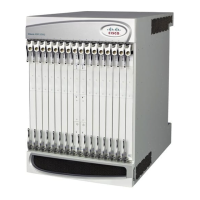Serving GPRS Support Node (SGSN) Overview
Cisco ASR 5000 Series Product Overview ▄
2.5G SGSN & 3G SGSN - Dual Access
SGSN (2.5G or 3G) & GGSN
Benefits of Co-Located GSNs
Integrated co-location is done without introducing proprietary protocols, thus avoiding mobility and handoff issues.
Multiple network element applications, integrated as a single application within a single chassis, benefit carriers for the
following reasons:
Same hardware for all services
Load sharing architecture ensures that all hardware is used efficiently
Single software load
Uniform configuration
Optimal usage of the high capacity system
Reduced latency in the control and data paths
Simplification of network architecture
Single platform-view, maintained even in the presence of multiple services
Fewer IP addresses needed
No internal interfaces
Combined SGSN/GGSN serve other SGSNs and GGSNs with no loss of functionality
Hand-offs between 2.5G and 3G networks can re-use the same SAU state; this avoids repeated exchanges with
the HLR thereby reducing the number of interaction messages
Operating as a combined SGSN/GGSN, the common processes host both SGSN and GGSN sessions resulting in
optimized hardware usage and latency
Combined with Iu-Flex and Gb-Flex, an SGSN/GGSN system enables single-hop core network routing (a given
session is always routed to the same combined node)

